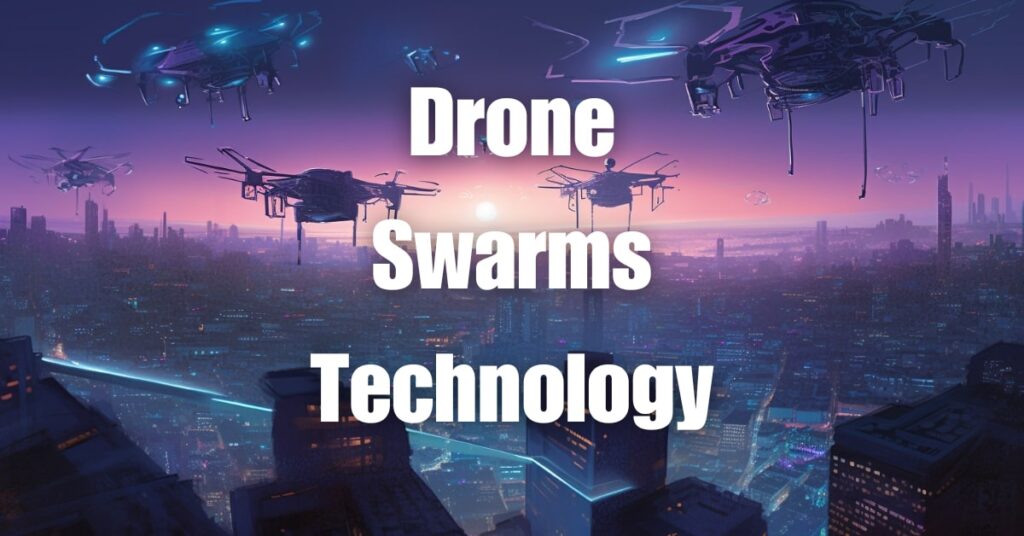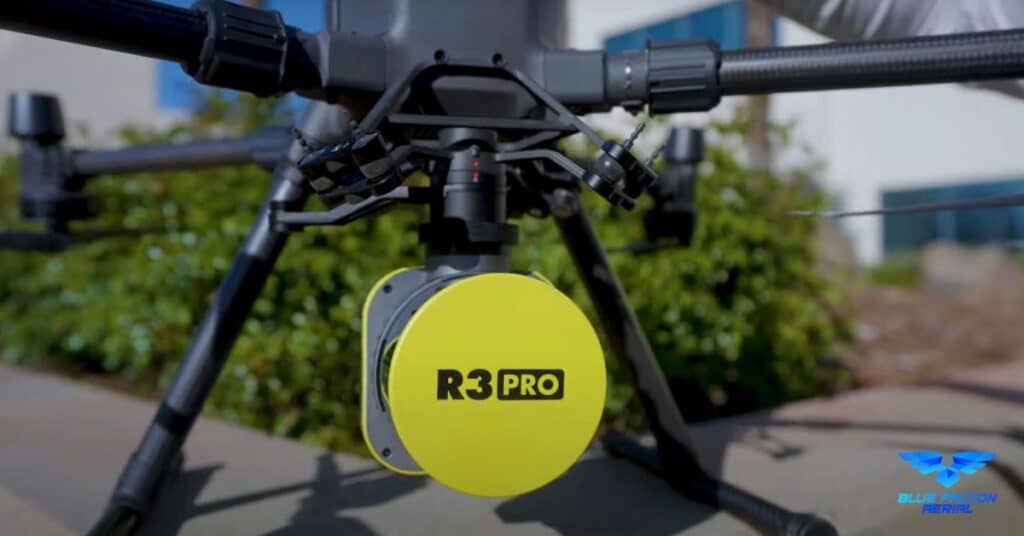The drone industry has been skyrocketing in recent years, transforming various sectors and revolutionizing the way we approach aerial operations. One of the key drivers of this growth is the implementation of Remote ID, a technology that promises to unlock the full potential of drones while addressing safety and security concerns. In this article, we’ll dive deep into Remote ID, explore its impact on the future of the drone industry, and discuss how it’s shaping the landscape for commercial drone operations.
Understanding Remote ID
What is Remote ID?
Remote ID is a digital identification system for drones, allowing them to be remotely identified by authorities, other airspace users, and the public. It functions as a “digital license plate” for drones, providing real-time information about the drone’s location, altitude, speed, and identification of the operator. The primary goal of Remote ID is to enhance safety and security in the airspace by enabling more efficient management of drone operations and facilitating better communication between drone operators, regulators, and law enforcement agencies.
Why do we need Remote ID for drones?
The need for Remote ID arises from the rapid growth of the drone industry and the increasing integration of drones into the airspace. As drone usage expands, so does the potential for accidents, airspace violations, and security threats. Remote ID addresses these concerns by:
- Enhancing situational awareness for all airspace users, reducing the risk of collisions and improving overall safety.
- Providing law enforcement and regulators with the necessary information to enforce compliance and identify rogue drones.
- Enabling advanced drone operations, such as beyond visual line of sight (BVLOS) flights and autonomous drone deliveries, which require accurate tracking and identification of drones in the airspace.
Compliance and Regulations
Who needs to comply with Remote ID regulations?
Drone operators, manufacturers, and service providers all have a role to play in ensuring compliance with Remote ID regulations. Generally, the following groups need to comply with Remote ID regulations:
- Drone operators: Both recreational and commercial drone pilots must adhere to Remote ID requirements when flying their drones.
- Drone manufacturers: They are responsible for integrating Remote ID technologies into their products or providing compatible solutions for retrofitting existing drones.
- Service providers: Companies providing drone-related services, such as fleet management or airspace authorizations, must ensure their systems are compatible with Remote ID requirements.
FAA Remote ID and international regulations
The Federal Aviation Administration (FAA) has established Remote ID requirements in the United States, which came into effect in April 2021. The main components of the FAA’s Remote ID regulations include:
- Standard Remote ID: Drones must broadcast their identification, location, and control station information using radio frequency technology.
- Limited Remote ID: Drones may operate within visual line of sight and must transmit their information through an internet connection to a Remote ID service provider.
- No Remote ID: Drones without Remote ID capabilities are restricted to flying in FAA-recognized identification areas (FRIAs).
In addition to the FAA, other international aviation authorities, such as the European Union Aviation Safety Agency (EASA) and the International Civil Aviation Organization (ICAO), have developed their own Remote ID regulations, with varying levels of alignment with the FAA’s rules.
Remote ID requirements for recreational and commercial drones
Remote ID requirements differ slightly for recreational and commercial drones. Recreational drone operators must ensure their drones are equipped with Remote ID capabilities or are flown within FRIAs. They may choose to use either Standard Remote ID or Limited Remote ID systems, depending on their preferred level of operation.
Commercial drone operators, on the other hand, often need to comply with more stringent requirements, especially if they operate beyond visual line of sight or in controlled airspace. In such cases, they must typically use a Standard Remote ID system, which provides real-time broadcasting of drone and operator information.
Overall, it is crucial for drone operators to familiarize themselves with the Remote ID regulations applicable in their region and ensure their drones are compliant before taking to the skies.
Remote ID Technologies
How does Remote ID work?
Remote ID systems can be broadly categorized into two types: broadcast-based and network-based. Both systems are designed to provide real-time information about drones in the airspace, but they differ in the way they transmit and receive data.
Broadcast-based systems: These systems use radio frequency technology to broadcast drone and operator information directly from the drone to nearby receivers, such as other drones, manned aircraft, and ground-based observers. The information is transmitted in real-time and can be accessed by anyone with a compatible receiver, ensuring maximum transparency and situational awareness.
Network-based systems: In these systems, drones transmit their information via an internet connection to a Remote ID service provider, which then makes the data available to authorized users through an online platform. Network-based systems can offer additional features, such as historical flight data, but may be limited by internet connectivity and data privacy concerns.
Remote ID transmitters and modules
To comply with Remote ID regulations, drones must be equipped with compatible transmitters or modules that can broadcast or transmit their information as required. There are several options available, depending on the drone and the specific Remote ID requirements:
Built-in Remote ID transmitters: Many new drones come with integrated Remote ID transmitters, enabling them to comply with Remote ID regulations right out of the box. Operators simply need to ensure that their drone’s firmware is up to date and configured correctly for their region.
Retrofit Remote ID modules: For drones without built-in Remote ID capabilities, operators can purchase and install external Remote ID modules that connect to the drone’s existing systems. These modules are designed to be compatible with a wide range of drones and can be easily installed by the operator or a qualified technician.
Remote ID apps and software: Some drone manufacturers and service providers offer software solutions that enable Remote ID compliance through a mobile app or a web platform. These solutions typically require the operator to input their drone’s information manually and may be suitable for certain limited Remote ID operations, such as flying within visual line of sight.
Implementing Remote ID
How to comply with Remote ID
To ensure compliance with Remote ID regulations, drone operators should take the following steps:
- Familiarize themselves with the Remote ID requirements applicable in their region, as regulations may vary between countries and jurisdictions.
- Determine which Remote ID system (broadcast-based or network-based) is most suitable for their operations and equipment.
- Ensure their drone is equipped with a compatible Remote ID transmitter or module, either built-in or retrofitted.
- Regularly update their drone’s firmware and software to stay current with the latest Remote ID requirements and standards.
- Register their drone and Remote ID transmitter or module with the relevant aviation authority, if required.
Remote ID compliance deadline
The Remote ID compliance deadline varies depending on the jurisdiction and the specific regulations. In the United States, the FAA has set the following deadlines for Remote ID compliance:
- Drone manufacturers: Required to produce Remote ID-compliant drones starting from September 2022.
- Drone operators: Must comply with Remote ID requirements by September 2023.
Drone operators should consult their local aviation authority for the relevant compliance deadlines in their region.
Challenges of implementing Remote ID
While Remote ID offers numerous benefits for the drone industry, implementing the technology is not without challenges. Some of the key obstacles include:
- Cost: Upgrading or retrofitting drones with Remote ID capabilities can be expensive, especially for small businesses and recreational users.
- Compatibility: Ensuring seamless integration between different Remote ID systems, drones, and service providers can be a complex task.
- Privacy concerns: Balancing the need for transparency and situational awareness with the privacy rights of drone operators and the general public is an ongoing challenge. Network-based systems, in particular, raise concerns about data storage, access, and potential misuse of sensitive information.
- Technological limitations: Network-based systems are reliant on internet connectivity, which may not be available in all areas or during all types of operations. Additionally, there is a need for standardized communication protocols and frequencies for broadcast-based systems to ensure interoperability between different drones and receivers.
- Regulatory harmonization: With different countries implementing their own Remote ID regulations, there is a risk of creating a fragmented regulatory landscape that could hinder cross-border drone operations and stifle innovation. To address this issue, international aviation organizations, such as ICAO and EASA, are working on developing harmonized Remote ID standards and best practices.
Despite these challenges, the drone industry is making significant progress in implementing Remote ID technologies and overcoming the obstacles. As Remote ID systems become more widespread and standardized, the benefits of enhanced safety, security, and operational efficiency will continue to drive the adoption of this critical technology in the drone industry.
Benefits of Remote ID
As Remote ID continues to be adopted worldwide, it brings a wealth of benefits to the drone industry, airspace users, and regulatory authorities. Some of the most significant advantages include:
Advantages for drone operators and the industry
- Increased safety: By providing real-time information on drone operations, Remote ID enhances situational awareness for all airspace users, reducing the risk of collisions and accidents.
- Enabling advanced operations: Remote ID is a critical enabler for beyond visual line of sight (BVLOS) flights, autonomous drone deliveries, and other advanced drone operations that require accurate tracking and identification of drones in the airspace.
- Streamlined regulatory compliance: Remote ID simplifies the process of identifying and tracking drones, making it easier for operators to comply with regulations and for authorities to enforce them.
- Greater public acceptance: Remote ID can help to alleviate public concerns about drones by providing transparency and accountability for drone operations, thereby fostering a more positive perception of the industry.
Remote ID vs traditional aircraft identification
Traditional aircraft identification methods, such as transponders and radar systems, are not well-suited to the unique challenges posed by the rapidly growing drone industry. Remote ID offers several advantages over these traditional systems:
- Scalability: Remote ID systems are designed to handle the high volume of drone traffic expected in the coming years, whereas traditional aircraft identification methods may struggle to keep up with the increased demand.
- Cost-effectiveness: Implementing Remote ID technologies is generally more affordable than installing and maintaining traditional aircraft identification systems, making it a more accessible solution for drone operators and manufacturers.
- Real-time information: Remote ID provides real-time data on drone operations, allowing for quicker response times and more efficient management of the airspace.
Remote ID compliance deadline
As mentioned in the previous section, the Remote ID compliance deadline varies depending on the jurisdiction and the specific regulations. In the United States, the FAA has set the following deadlines for Remote ID compliance:
- Drone manufacturers: Required to produce Remote ID-compliant drones starting from September 2022.
- Drone operators: Must comply with Remote ID requirements by September 2023.
Drone operators should consult their local aviation authority for the relevant compliance deadlines in their region. By meeting these deadlines and embracing the benefits of Remote ID, operators can position themselves at the forefront of the drone industry and unlock new opportunities for growth and innovation.
In conclusion, Remote ID is a game-changer for the drone industry, streamlining operations, ensuring airspace safety, and unlocking new opportunities for businesses. By understanding the technology and its implications, drone operators can stay ahead of the curve and reap the benefits of this innovation. To learn more about growing your drone business and navigating the evolving landscape of drone regulations, visit Soaring High: A Comprehensive Guide to Building and Growing Your Drone Business. If you need any drone services or expert guidance, don’t hesitate to contact Blue Falcon Aerial today.




